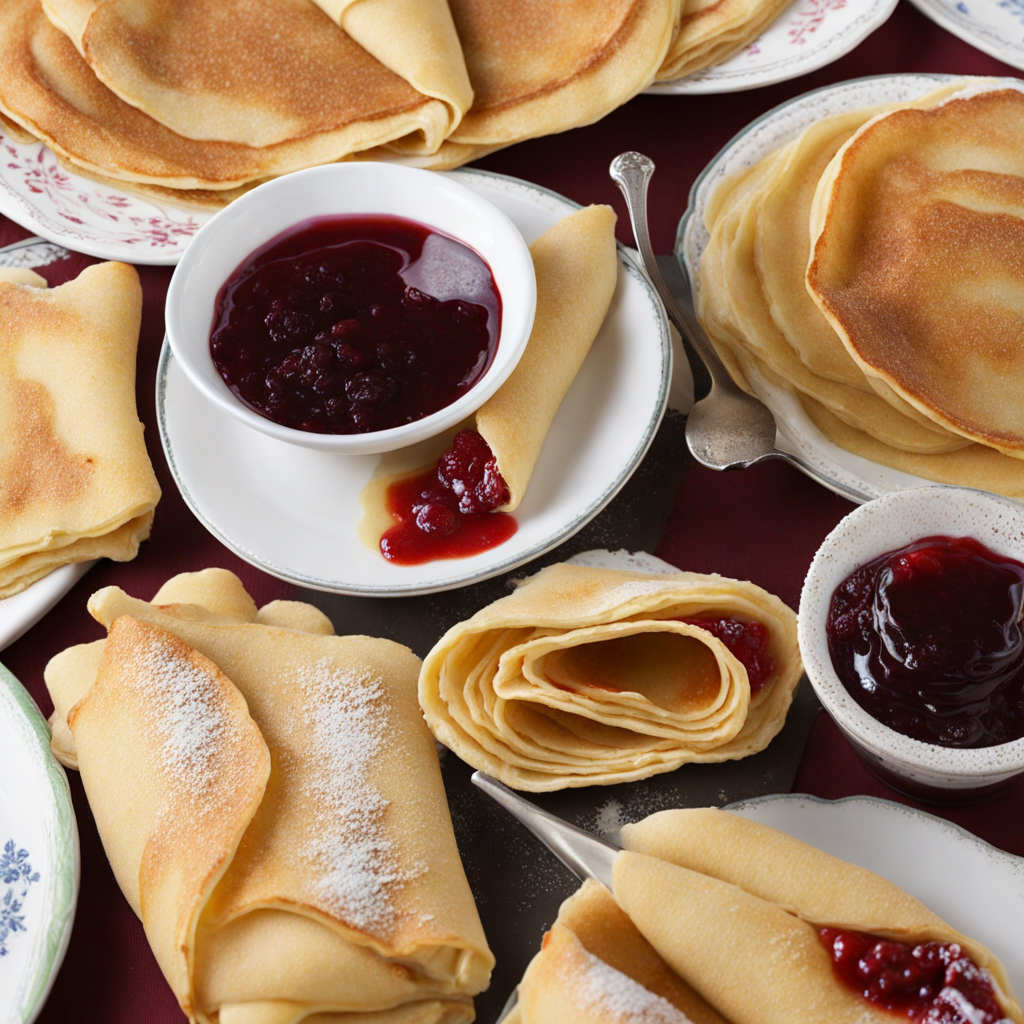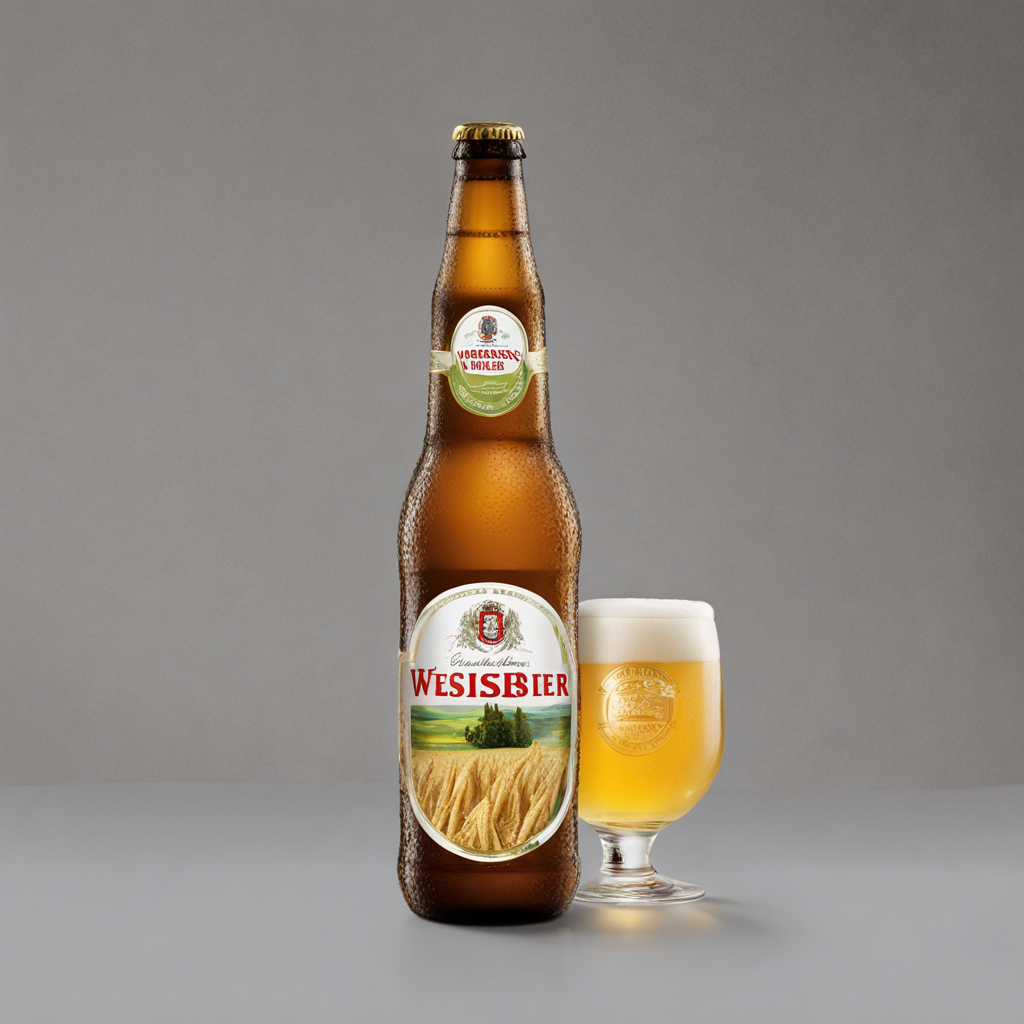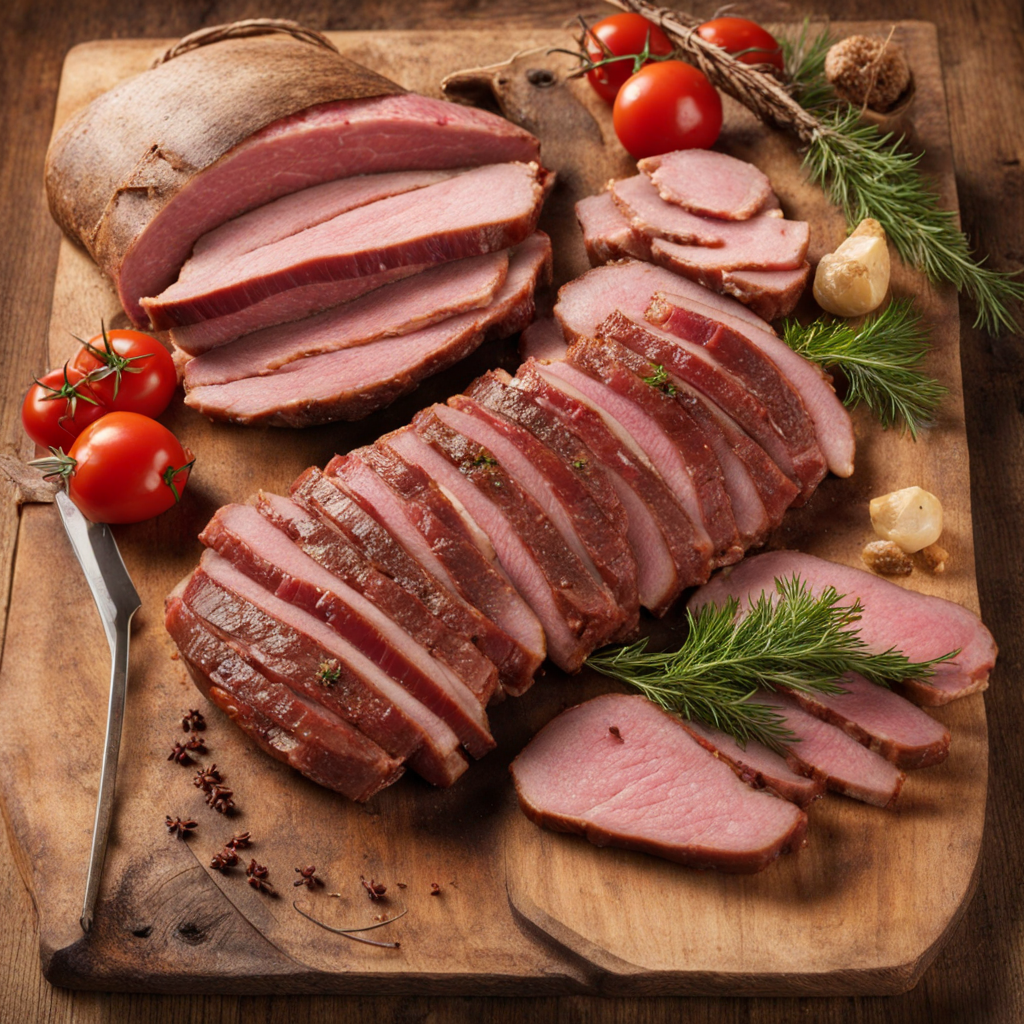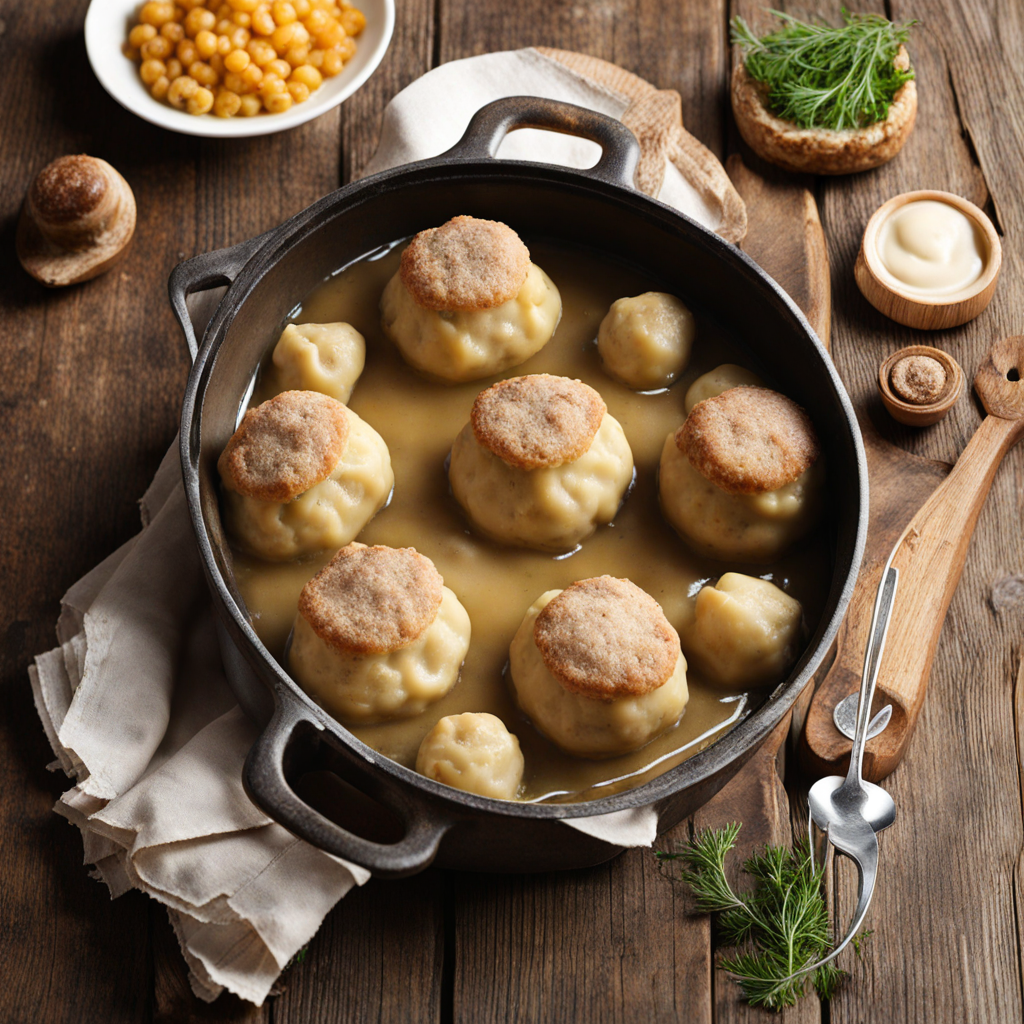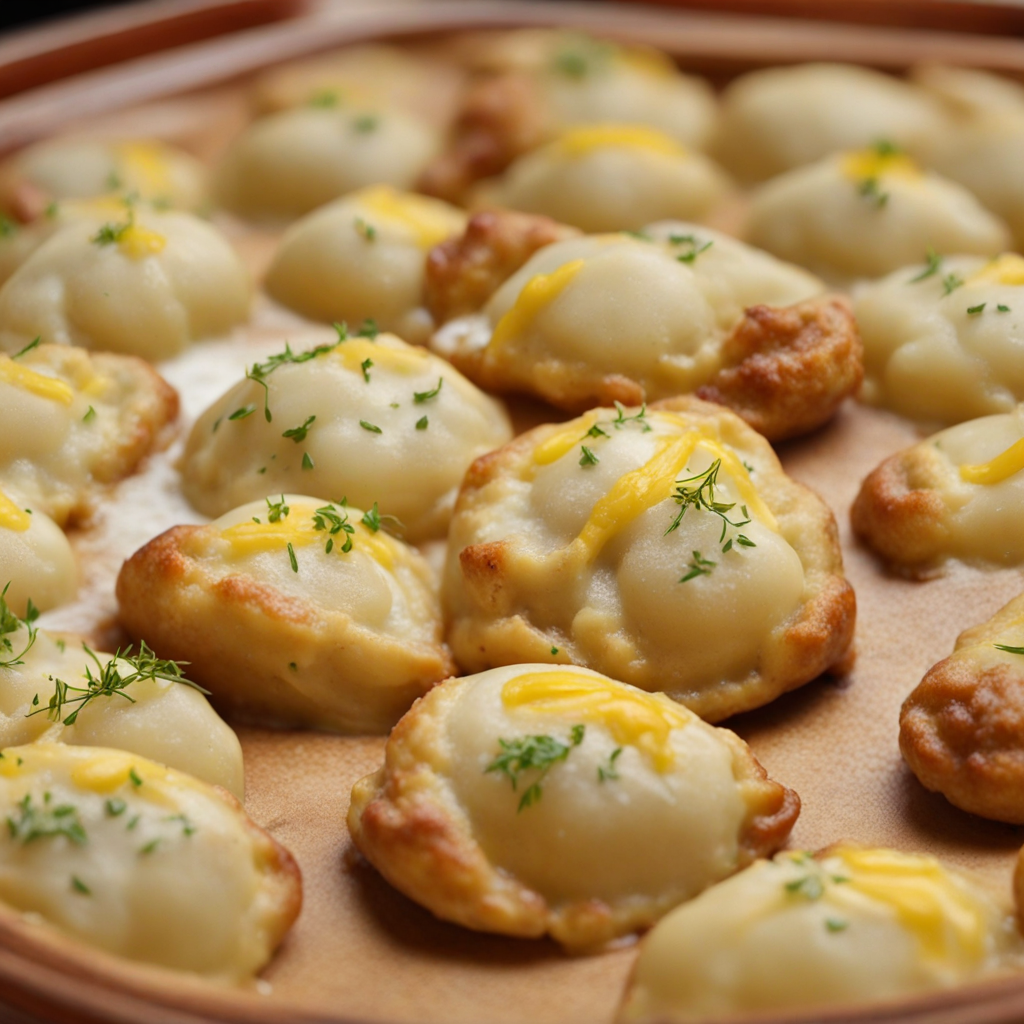Palatschinken
Palatschinken are a delightful and versatile traditional dish from Austria, resembling thin crepes but with their unique twist. Made from a simple batter of flour, eggs, milk, and a pinch of salt, these delicate pancakes are cooked to a golden perfection, resulting in a slightly chewy yet tender texture. The batter is poured onto a hot skillet, spread evenly, and cooked until just set, showcasing the skill of the cook in achieving that elusive balance of thinness and elasticity. Their lightness makes them perfect for both sweet and savory fillings, allowing for a world of culinary creativity to unfold. When it comes to fillings, Palatschinken can be customized to suit any palate. For a sweet treat, they are often filled with a luscious mixture of fruit preserves, Nutella, or a creamy vanilla custard, then rolled or folded and dusted with powdered sugar for a touch of elegance. The addition of fresh fruits like strawberries or bananas can elevate the experience, adding a burst of flavor and a refreshing contrast to the rich fillings. On the savory side, Palatschinken can be stuffed with a blend of sautéed mushrooms, spinach, and cheese, or even a hearty meat mixture, making for a satisfying meal that can be enjoyed at any time of the day. The beauty of Palatschinken lies not only in their taste but also in their presentation. They can be elegantly plated, garnished with fresh herbs or a drizzle of sauce, making them as appealing to the eye as they are to the palate. Whether enjoyed as a sweet dessert or a savory main course, Palatschinken offer an unforgettable culinary experience, inviting you to explore the rich flavors of Austrian cuisine in each delicious bite.
How It Became This Dish
Palatschinken: A Delicious Journey through Austrian Culinary History The culinary landscape of Austria is rich and diverse, renowned for its pastries, sausages, and hearty dishes. Among these delights stands Palatschinken, a beloved dish that not only tantalizes the taste buds but also embodies the cultural tapestry of Austrian history. This thin, crepe-like pancake has a story that spans centuries, reflecting the influences of various cultures and the evolution of Austrian gastronomy. Origins of Palatschinken The origin of Palatschinken can be traced back to the broader category of pancakes and crepes found in many cultures around the world. The word "Palatschinke" itself is derived from the Slovene word "palačinka," which means pancake. The dish is believed to have its roots in the Slavic regions and was introduced to the Austrian culinary scene during the Austro-Hungarian Empire, which spanned from the late 19th century to the early 20th century. Historically, pancakes have been a staple food in various cultures, dating back to ancient times. In Austria, they were made with simple ingredients: flour, eggs, milk, and salt. These ingredients were readily available and could be easily transformed into a nourishing meal. The process of making Palatschinken involves mixing the ingredients into a thin batter, frying it in a pan, and then filling it with a variety of sweet or savory fillings. Cultural Significance Palatschinken is more than just a dish; it is a cultural symbol in Austria and a staple at family gatherings and celebrations. The versatility of Palatschinken allows it to be served in multiple ways, making it a beloved choice for breakfast, dessert, or even a main course. Traditionally, Palatschinken are filled with ingredients such as apricot jam, Nutella, or quark (a type of fresh cheese), and then rolled or folded, creating a delightful treat. In Austria, Palatschinken is often associated with special occasions. Families prepare them during birthdays, holidays, and festivals, where they can be customized to suit individual tastes. The act of making Palatschinken is often a communal activity, bringing family members together in the kitchen, fostering a sense of unity and tradition. This communal aspect is crucial in Austrian culture, where food signifies love, care, and connection. Development Over Time As Austria evolved over the centuries, so did the Palatschinken. The dish began to incorporate influences from neighboring countries and regions, adapting to the changing tastes and preferences of the population. During the Austro-Hungarian Empire, culinary exchanges flourished, and Palatschinken became a canvas for creativity, leading to an array of fillings and presentation styles. In the early 20th century, as tourism boomed in Austria, particularly in Vienna, Palatschinken gained notoriety in restaurants and cafes. Chefs began to experiment with gourmet fillings, elevating the dish from a humble home-cooked meal to a sophisticated menu item. The introduction of chocolate, caramel, and seasonal fruits turned Palatschinken into a dessert that could rival the most exquisite pastries. Post-World War II, Austrian cuisine underwent a renaissance, with chefs returning to traditional recipes while also embracing modern techniques. Palatschinken saw a resurgence, often served with innovative fillings and garnishes. The dish became a symbol of nostalgia, reminding Austrians of their culinary heritage while also appealing to contemporary palates. Modern Variations Today, Palatschinken can be found in various forms, reflecting the evolving tastes and dietary preferences of modern society. Chefs and home cooks alike have embraced gluten-free and vegan options, using alternative flours and plant-based ingredients to create Palatschinken that cater to diverse dietary needs. This adaptability has ensured that Palatschinken remains a beloved dish across generations. In addition to traditional fillings, contemporary variations include savory options such as spinach and feta or mushroom and cheese, showcasing the dish's versatility. Palatschinken is now often featured in Austrian restaurants and cafes, where they are served with a modern twist, such as a drizzle of balsamic reduction or a sprinkle of fresh herbs. Palatschinken in the Global Context While Palatschinken is deeply rooted in Austrian culture, its influence has spread beyond borders. The concept of thin pancakes filled with various fillings can be found in many cuisines worldwide. For instance, French crepes and Italian crespelle share similarities with Palatschinken, demonstrating the interconnectedness of culinary traditions. As globalization continues to shape the culinary world, Palatschinken has found its way into international menus, often adapted to suit local tastes. The dish has become a favorite among food enthusiasts and travelers, who seek to experience the authentic flavors of Austria. Conclusion Palatschinken is more than just a simple pancake; it is a delicious testament to Austria’s rich culinary history and cultural identity. From its humble origins to its modern iterations, Palatschinken has evolved while remaining a cherished dish among Austrians. Its versatility, communal significance, and adaptability ensure that it will continue to occupy a special place in the hearts and kitchens of many. As we savor the delicate layers of Palatschinken, filled with sweet or savory goodness, we partake in a tradition that spans generations, connecting us to the past while delighting our taste buds in the present. Whether enjoyed at a family gathering, a cozy café, or a festive celebration, Palatschinken is a culinary experience that encapsulates the warmth and richness of Austrian hospitality.
You may like
Discover local flavors from Austria


